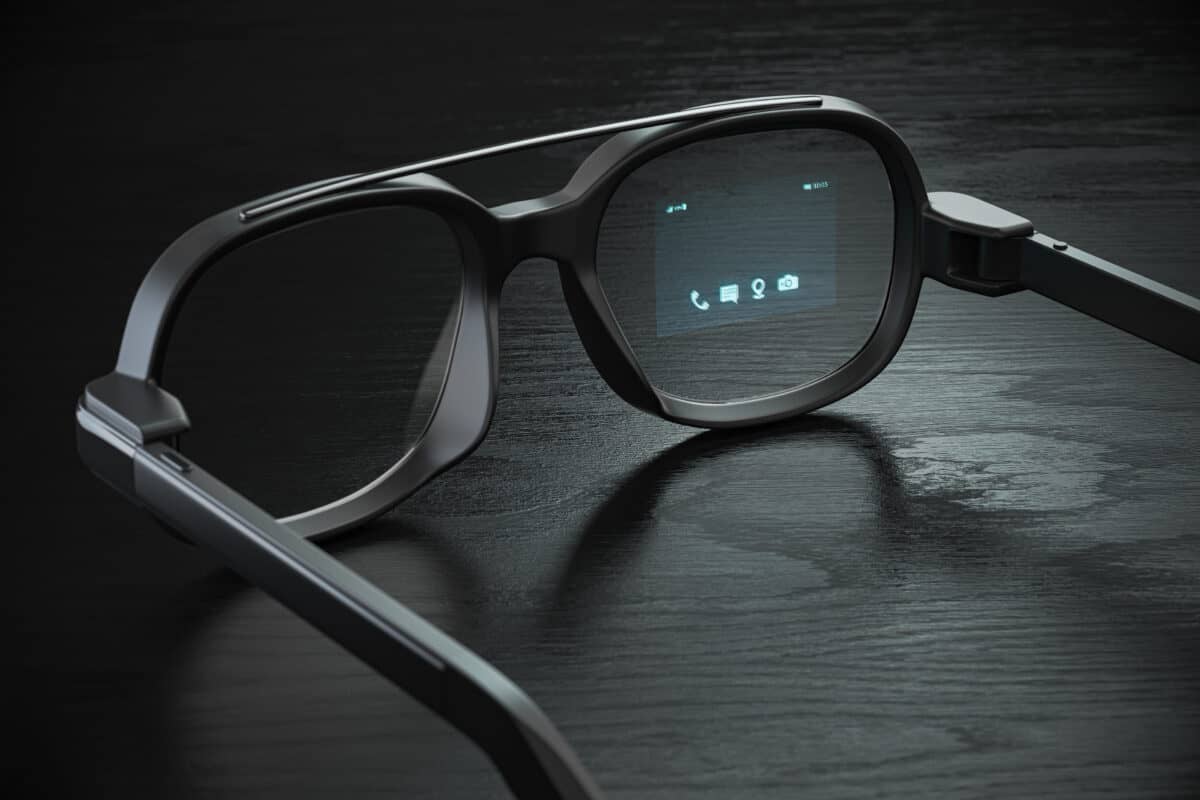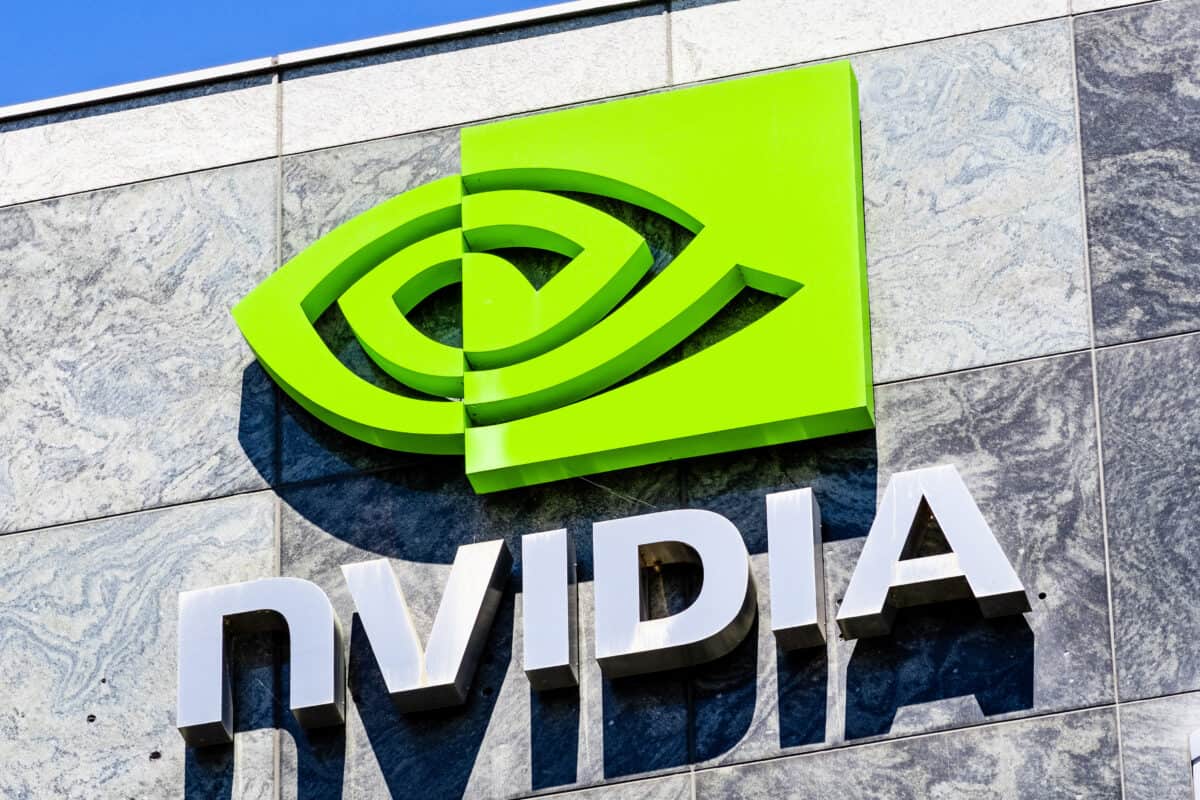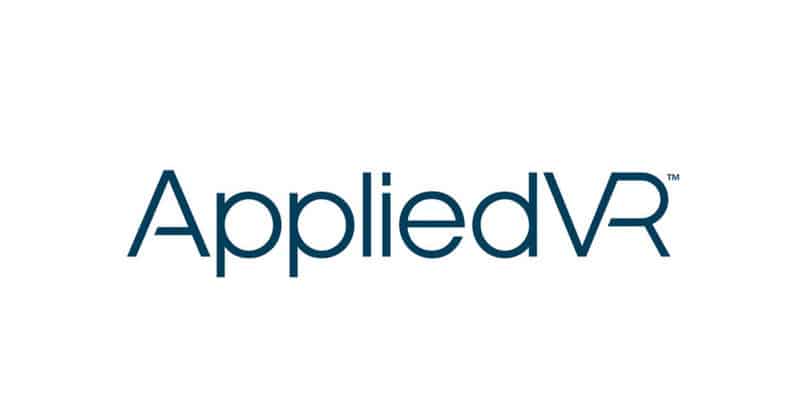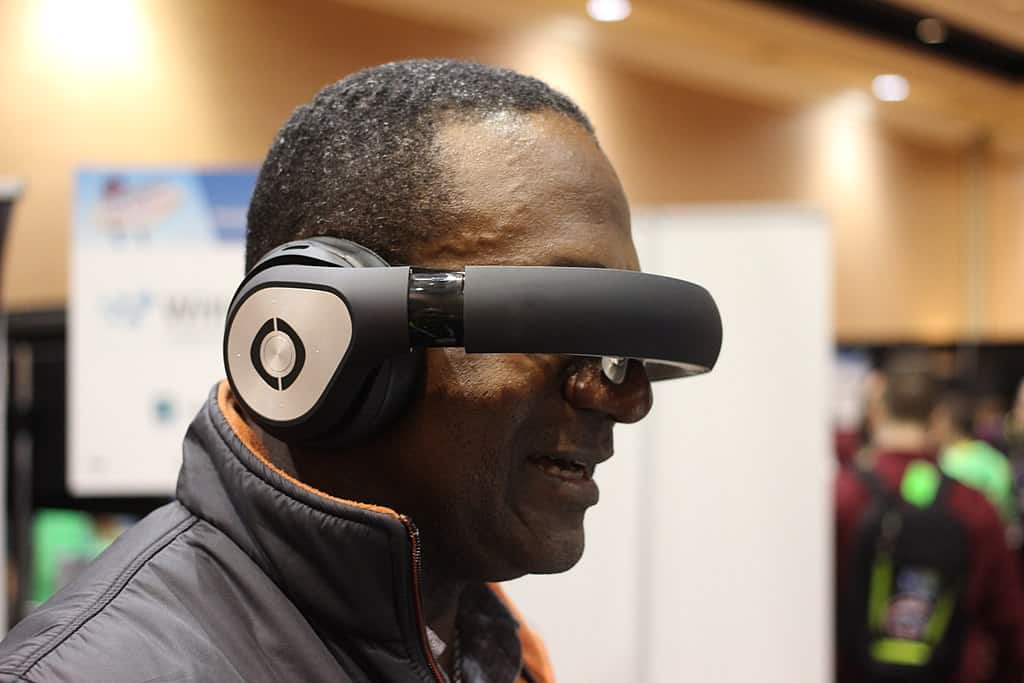Augmented reality (AR) technology has rapidly grown, with adoption increasing since the 2020 pandemic. From games to software applications, interactive maps, and educational tools, AR technology has multiple applications. Numerous companies have invested billions to develop the hardware and software to make AR a next-generation technology. Below we highlight the 10 largest AR companies in the world and what they do, along with detailed company profiles, revenues, and FAQs.
#1 Apple AR

As the world’s largest technology company by revenue, it is understandable that Apple has the resources and expertise to dominate the augmented reality arena potentially. Like its big five competitors, including Meta, Google, Amazon, and Microsoft, Apple is investing heavily in AR software and hardware technology.
Company profile
Apple Augmented Reality develops and produces hardware and software for AR. Dedicated R&D teams design the hardware and software to ensure a fully optimized user experience. AR products that Apple is working on include cameras, displays, GPUs, and motion sensors. Apple also develops platforms and tools for AR developers. The ARKit 5 and RealityKit frameworks support the development of AR features for Apple devices and software. Apple intends that its apps and programs will support the AR experience. In early 2022, Apple filed a trademark for an operating system that would be dedicated to supporting virtual and augmented reality headsets.
| Headquarters | Cupertino, California, United States |
| Founded | 1976 by Steve Jobs, Steve Wozniak, Ronald Wayne |
| CEO | Tim Cook |
| Revenue: | $365 billion (2021) |
| Number of employees: | 154,000 |
| Website | https://www.apple.com/augmented-reality/ |
#2 Google AR & VR
Alphabet Group, Google’s parent company, has invested in augmented reality hardware and software. Currently, Google’s focus seems to be on developing AR technology for Android/mobile apps. Their AR & VR labs are focused on finding new ways for Google-connected devices to be helpful.
Company profile
Google AR & VR is a growing area, with the VP or AR & VR reporting directly to Google’s CEO, Sundar Pichai. This is in keeping with the substantial investments of competitors like Apple and Facebook, with Google Lens being a particular area of intensive development. Google believes AR smart glasses will be extremely successful once the technology becomes more widely adopted.

Google is keen to get AR working for its users in practical ways. Example use cases provided by the company include augmented reality overlays, immersive content, and integration with Google Search and YouTube. Work on AR also involves collaboration between Google AR & VR and its hardware and platform teams, who are “thinking through” AR now.
| Headquarters | Mountain View, California |
| Founded | 1998 by |
| Current President | Clay Bavor (VP of AR & VR) |
| Revenue | $209 billion (2021) |
| Employees: | 139,995 |
| Website | ttps://arvr.google.com/ar/ |
#3 Pixar
Pixar Animation Studios is a California-based computer animation studio renowned for its computer-generated image (CGI) feature films. Pixar is owned by the Walt Disney Company and operates as a subsidiary of Walt Disney Studios. Over the last 30 years, Pixar has diversified into the development of augmented reality technology. The company has developed open-source technologies alongside ongoing research and development.
Company profile
Pixar was founded in 1979 as a subdivision of Lucasfilm known as the Graphics Group. In 1986, with the aid of $5 million in funding from Steve Jobs, it became a corporation. Its first CGI feature film, Toy Story grossed over $3 billion worldwide. Disney later acquired Pixar for over $7 billion in 2006.
Pixar has a thriving R&D department that has developed key graphics technologies used in AR. The company’s research covers aspects of AR and animation technology like:
- Rasterizing Volumes and Surfaces for Crowds
- Phong Deformation
- Orthogonal Array Sampling
Pixar is at the forefront of developing immersive entertainment registering numerous patents in this area. Their research spans 3D, IMAX, CGI, VR, and AR technologies. Their open-source graphics technologies include OpenSubdiv and Open Timeline. Pixar also developed the Universal Scene Description (USDZ) file format in partnership with Apple for AR imaging on iPhones.
| Headquarters | Emeryville, California, |
| Founded | 1986 |
| CEO | Jim Morris |
| Revenue | $6.7 billion (2021) |
| Employees: | 1,233 |
| Website | www.pixar.com |
#4 NVIDIA

Nvidia is one of the world’s largest manufacturers of GPUs (Graphic Processing Units), with a heavy emphasis on gaming and an increasing focus on augmented reality. It has become an artificial intelligence (AI) hardware and software leader. They also produce system-on-a-chip modules along with laptops and drivers.
Company profile
Nvidia’s “GeForce” product line and gaming platform reflect the company’s heavy focus on gaming. In recent years, the company has branched out in AR, producing NVIDIA DRIVE™, a scalable AI car platform, and the “GameWorks” software for photorealistic gaming.
NVIDIA was founded on April 5, 1993, with an initial operating budget of just $40,000. The founders, Jensen Huang, Chris Malachowsky, and Curtis Priem, have semiconductor technology and electrical engineering backgrounds. They believed graphics-based computing would drive the next wave of innovation in the sector.
In recent years, Nvidia has built on its gaming expertise to develop an AR platform known as the Omniverse. This is a collaborative platform where developers can create and operate metaverse applications. Developers and engineers can undertake 3D graphic design in this environment using Pixar’s open-source Universal Screen Description (USD) standard.
| Headquarters | Santa Clara, California, |
| Founded | 1993 |
| CEO | Jensen Huang |
| Revenue | $6.7 billion (2021) |
| Employees | 13,775 |
| Website | www.nvidia.com |
#5 SNAP Inc.

Snap Inc. is the camera app company behind the popular social media app, Snapchat. Founders Evan Spiegel, Bobby Murphy, and Reggie Brown have run the company since it started in 2011. Snap Inc. is gaining recognition as an augmented reality company because of its recent acquisitions focused on AR technology.
Company profile
But beyond the app, it has made noteworthy advances in AR technology and integrated it into the user experience. In particular, Snap has developed a range of AR eyewear, including collaborations with Prada. Their “Spectacles” glasses feature gesture recognition and present the user with items they are looking at in different colors, using the eyewear as a ‘virtual mirror’.
The Snapchat app was originally called Picaboo. The founders switched the name to Snapchat and launched the app in September 2011. In 2016 they renamed the company Snap. Its IPO in March 2017 raised $3.4 billion, and Snap has since gained the following AR-related companies:
- Vergence Labs (acquired 2014): a company that produces glass frames for video recording eyewear.
- Looksery (acquired 2015): a selfie animation app that uses facial recognition technology to place filters over the user.
- Seene / Obvious Engineering: a camera app that can scan real-life images and create 3D VR versions.
| Headquarters | Chantilly, Virginia |
| Founded | 2011 |
| CEO | Evan Spiegel |
| Revenue | $6.7 billion (2021) |
| Employees | 5,661 |
| Website | www.snap.com |
#6 Niantic
Niantic is an augmented reality gaming company known for its bestseller game, Pokémon Go. They develop games to be used by smartphone users on a subscription basis, with in-app revenues of almost $1 billion annually.
Company profile
Niantic has established a reputation for creating augmented reality experiences that intermingle with the natural world. Their gaming involves interacting with the natural environment and real landmarks. Niantic calls this the Naturalverse and has invested in various R&D projects to expand this concept.
Niantic began as Niantic Labs within Google and is named after an American whaling vessel. The lab was started in 2010 by John Hanke and Phil Keslin, later separating from Google in 2015.
Niantic has made many AR-related acquisitions, including Evertoon, Escher Reality, and Seismic Games. It has also created an AR development platform called Lightship using an augmented reality Development Kit (ARDK).
| Headquarters | Chantilly, Virginia |
| Founded | 2010 |
| CEO | John Hanke |
| Revenue | $890 million |
| Employees | 777 |
| Website | https://www.nianticlabs.com/ |
#7 SightCall
SightCall is a SaaS company that uses augmented reality and artificial intelligence to help customer service professionals serve customers over a live video connection. SightCall’s visual assistant uses AR to create overlaid digital graphics so that customer service reps can guide product users in real-time from a remote location.
Company profile
SightCall is a cloud software company that provides AR guidance that can assist customers, service users, and technicians via their smartphones. Their proprietary interface uses AI computer vision analysis to layer on AR directions and instructions with features that include live pointers, annotations, and zooming on images or video. The technology applies to a wide range of industries.
The company was founded in 2008 by Antoine Vervoort and Thomas Cottereau. In 2011 it received a $4 million seed round investment from ID Invest Partners. Its latest funding round in 2021 raised $42 million.
With SightCall, customer points their smartphone camera at the problem they are encountering with a product. SightCall’s AI identifies the problem, and AR is used to annotate their video call to guide the customer effectively. Customers can do this with a customer service professional or as a self-service option. SightCall has had a promising start with the technology adopted by companies including Kraft, GE Healthcare, and Jaguar Land Rover.
| Headquarters | San Francisco, California |
| Founded | 2008 |
| CEO | Thomas Cottereau |
| Revenue | $100 million (2022) |
| Employees | 200 |
| Website | http://www.sightcall.com/ |
#8 Applied VR

Logo
Applied VR is a virtual reality company that develops VR-based therapeutic solutions for pain management. It was the first company to apply the research methodologies and standards used in traditional medical device development to virtual reality.
Company profile
AppliedVR is a digital therapeutics startup currently speeding up the development, testing and distribution of its chronic pain management technology that uses VR-delivered immersive experiences.
Its signature product is the EaseVRx therapy which uses a VR headset, controller, and breathing amplifier to take patients through a 16-minute session to ease chronic back pain. The technology is doctor-prescribed and designed to teach users effective pain management strategies by using the immersive experience. EaseVRx has shown promising results in a range of clinical trials that included over 30,000 patients. AppliedVR attracted $36 million in angel investment in 2021 to scale the solution to different clinical conditions.
AppliedVR was founded in 2013 by Matthew Stoudt and David Sackman. The firm designed its VR therapeutic solution in partnership with leading physicians and pain management experts. It has established commercial relationships with over 240 hospitals that use EaseVRx as part of their pain management protocols.
| Headquarters | Van Nuys, California, United States |
| Founded | 2013 |
| CEO | Matthew Stoudt |
| Revenue | $7 million |
| Employees | 49 |
| Website | appliedvr.io |
#9 Avegant
Avegant specializes in augmented reality display solutions, using micro-mirror arrays to create pixel-free AR images for AR and VR applications.

Company profile
Avegant is an AR hardware company with over a decade of experience developing and manufacturing light engines for AR and VR headwear. Their advanced optics technology has garnered investors that include Intel, Applied Ventures, and DN Capital.
It was founded in 2012 by Taiwanese-American Edward Tang, who remains its CEO. Tang, an electrical engineering graduate of the University of Michigan, specialized in electrical engineering and developing the micro-electrical mechanical systems (MEMS) on which Avegant is built.
Avegant has developed light engines for AR and VR devices. Avegant uses its proprietary illumination technology to create AR glasses with a bigger field of view. The light engines solve one of AR’s biggest challenges, reducing the form factor of glasses and headsets. In 2021. Avegant released the AG-30L 30º and the AG-50L 50º LED light engines, which are expected to go into mass production in 2023.
| Headquarters | Belmont, California, |
| Founded | 2012 |
| CEO | Edward Tang |
| Revenue | $9 million (2022) |
| Employees | 7 |
| Website | http://avegant.com/ |
#10 3dar

3dar is an augmented reality production company based in Santa Monica, California, and Buenos Aires, Argentina. Its focus is on using AR as a storytelling tool, and it has produced several well-received animated films.
Company profile
Alongside its production of short films, 3dar provides the following services:
- Production of television commercials with animation and VFX.
- Development of VFX for feature films
- Creation of immersive AR content for education and marketing
- Experiential design
Federico and German Heller founded 3dar in Buenos Aires, Argentina in 2004. Federico is a producer and director who launched his career and 3dar with his short film Uncanny Valley which went viral. The team has since worked with Disney, Universal, and FOX. In particular, the music video “Earth”, which achieved over 200,000 views received a Cannes Lion and two Webby awards.
| Headquarters | Santa Monica, California, |
| Founded | 2004 |
| CEO | Federico Heller |
| Revenue | $4.6 million (2022) |
| Employees | 24 |
| Website | https://www.3dar.com/ |
The Largest Augmented Reality Companies In The World, And What They Do
| Rank | Company |
|---|---|
| #1 | Apple AR |
| #2 | Google AR & VR |
| #3 | Pixar |
| #4 | Nvidia |
| #5 | SNAP |
| #6 | Niantic |
| #7 | SightCall |
| #8 | Applied VR |
| #9 | Avegant |
| #10 | 3dar |
The image featured at the top of this post is ©iStock.com/Jovanmandic.

